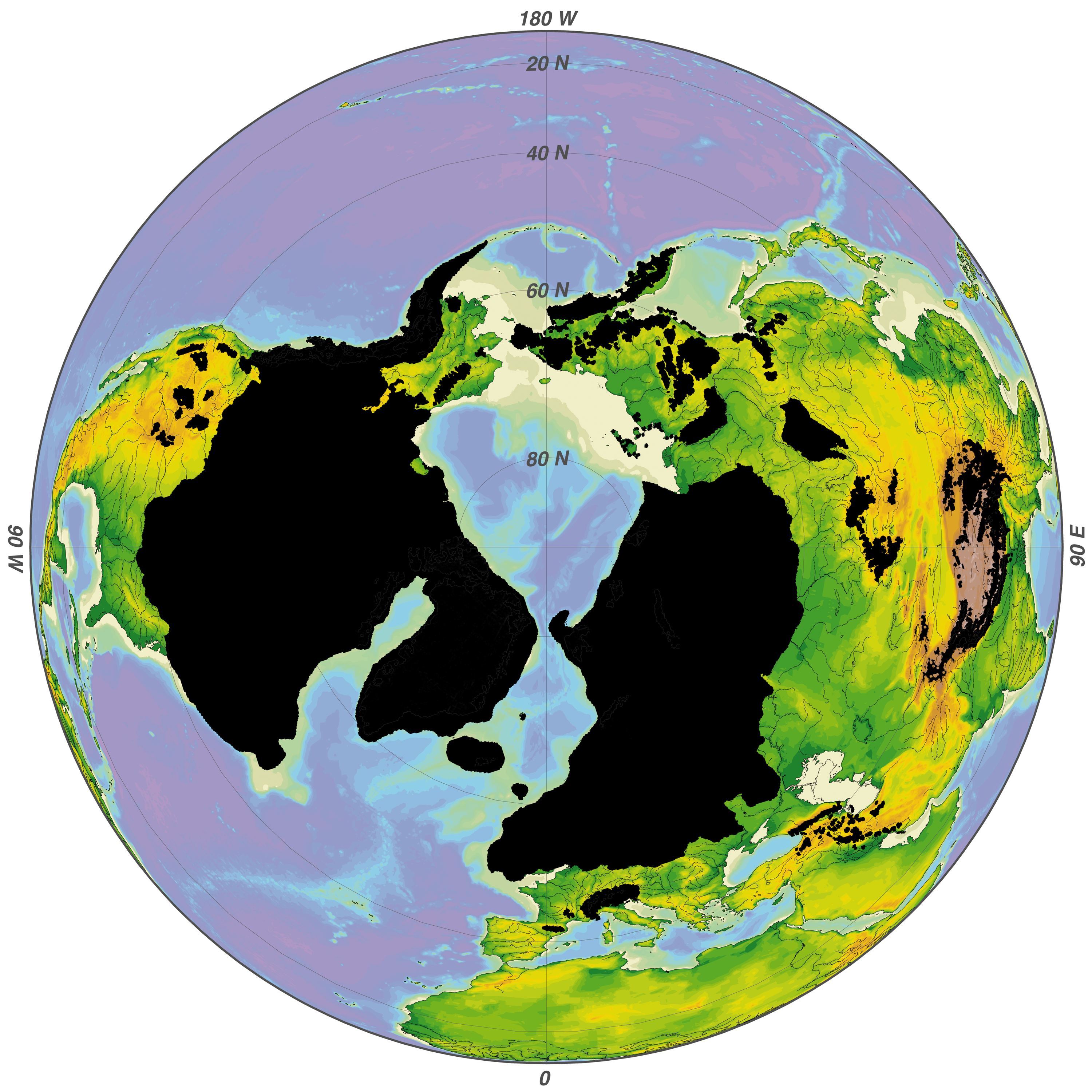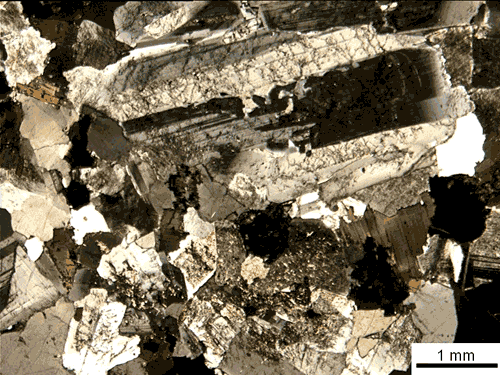|
Magellanic Moorland
250px, Magellanic moorland at Herschel Island, Cabo de Hornos National Park. The Magellanic moorland or Magellanic tundra ( es, Tundra magallánica) is an ecoregion on the Patagonian archipelagos south of latitude 48° S. It is characterized by high rainfall with a vegetation of scrubs, bogs and patches of forest in more protected areas. Cushion plants, grass-like plants and bryophytes are common. At present there are outliers of Magellanic moorland as far north as in the highlands of Cordillera del Piuchén (latitude 42° 22' S) in Chiloé Island. During the Llanquihue glaciation Magellanic moorland extended to the non-glaciated lowlands of Chiloé Island and further north to the lowlands of Chilean lake district (latitude 41° S). The classification of Magellanic moorland has proven problematic as substrate, low temperatures and exposure to the ocean influences the development of the Magallanic moorland. It thus may qualify either as polar tundra or heathland. Flora and plan ... [...More Info...] [...Related Items...] OR: [Wikipedia] [Google] [Baidu] |
Nothofagus Betuloides
''Nothofagus betuloides'', Magellan's beech or ''guindo'', is a tree native to southern Patagonia. In 1769, Sir Joseph Banks collected a specimen of the tree in Tierra del Fuego during Captain Cook's first voyage. Its occurrence on Hornos Island earns it the distinction of being the southernmost tree on Earth. Distribution ''Nothofagus betuloides'' grows from southern Chile and southern Argentina (40°S) to Tierra del Fuego (56°S). It is found from sea level to above mean sea level. One specimen growing near the southeastern corner of Hornos Island (Cape Horn) was identified in 2019 as the southernmost tree in the world. Description It is an evergreen tree up to tall, with a columnar appearance. In its natural environment, it tolerates cold winters and absence of heat in summer. Specimens from the southern forests resist temperatures down to . Cultivation It succeeds in Scotland. Trees planted in the Faroe Islands, which were imported directly from its southernmost distr ... [...More Info...] [...Related Items...] OR: [Wikipedia] [Google] [Baidu] |
Oceanic Climate
An oceanic climate, also known as a marine climate, is the humid temperate climate sub-type in Köppen classification ''Cfb'', typical of west coasts in higher middle latitudes of continents, generally featuring cool summers and mild winters (for their latitude), with a relatively narrow annual temperature range and few extremes of temperature. Oceanic climates can be found in both hemispheres generally between 45 and 63 latitude, most notably in northwestern Europe, northwestern America, as well as New Zealand. Precipitation Locations with oceanic climates tend to feature frequent cloudy conditions with precipitation, low hanging clouds, and frequent fronts and storms. Thunderstorms are normally few, since strong daytime heating and hot and cold air masses meet infrequently in the region. In most areas with an oceanic climate, precipitation comes in the form of rain for the majority of the year. However, some areas with this climate see some snowfall annually during winter. ... [...More Info...] [...Related Items...] OR: [Wikipedia] [Google] [Baidu] |
Quaternary Glaciation
The Quaternary glaciation, also known as the Pleistocene glaciation, is an alternating series of glacial and interglacial periods during the Quaternary period that began 2.58 Ma (million years ago) and is ongoing. Although geologists describe this entire period up to the present as an " ice age", in popular culture this term usually refers to the most recent glacial period, or to the Pleistocene epoch in general. Since Earth still has polar ice sheets, geologists consider the Quaternary glaciation to be ongoing, though currently in an interglacial period. During the Quaternary glaciation, ice sheets appeared, expanding during glacial periods and contracting during interglacial periods. Since the end of the last glacial period, only the Antarctic and Greenland ice sheets have survived, with other sheets formed during glacial periods, such as the Laurentide Ice Sheet, having completely melted. The major effects of the Quaternary glaciation have been the continental erosio ... [...More Info...] [...Related Items...] OR: [Wikipedia] [Google] [Baidu] |
Regolith
Regolith () is a blanket of unconsolidated, loose, heterogeneous superficial deposits covering solid rock. It includes dust, broken rocks, and other related materials and is present on Earth, the Moon, Mars, some asteroids, and other terrestrial planets and moons. Etymology The term '' regolith'' combines two Greek words: (), 'blanket', and (), 'rock'. The American geologist George P. Merrill first defined the term in 1897, writing: Earth Earth's regolith includes the following subdivisions and components: * soil or pedolith * alluvium and other transported cover, including that transported by aeolian, glacial, marine, and gravity flow processes. * "saprolith'", generally divided into the ** ''upper saprolite'': completely oxidised bedrock ** ''lower saprolite'': chemically reduced partially weathered rocks ** ''saprock'': fractured bedrock with weathering restricted to fracture margins * volcanic ash and lava flows that are interbedded with unconsolidated material ... [...More Info...] [...Related Items...] OR: [Wikipedia] [Google] [Baidu] |
Volcanic Rock
Volcanic rock (often shortened to volcanics in scientific contexts) is a rock formed from lava erupted from a volcano. In other words, it differs from other igneous rock by being of volcanic origin. Like all rock types, the concept of volcanic rock is artificial, and in nature volcanic rocks grade into hypabyssal and metamorphic rocks and constitute an important element of some sediments and sedimentary rocks. For these reasons, in geology, volcanics and shallow hypabyssal rocks are not always treated as distinct. In the context of Precambrian shield geology, the term "volcanic" is often applied to what are strictly metavolcanic rocks. Volcanic rocks and sediment that form from magma erupted into the air are called "volcaniclastics," and these are technically sedimentary rocks. Volcanic rocks are among the most common rock types on Earth's surface, particularly in the oceans. On land, they are very common at plate boundaries and in flood basalt provinces. It has been est ... [...More Info...] [...Related Items...] OR: [Wikipedia] [Google] [Baidu] |
Schist
Schist ( ) is a medium-grained metamorphic rock showing pronounced schistosity. This means that the rock is composed of mineral grains easily seen with a low-power hand lens, oriented in such a way that the rock is easily split into thin flakes or plates. This texture reflects a high content of platy minerals, such as micas, talc, chlorite, or graphite. These are often interleaved with more granular minerals, such as feldspar or quartz. Schist typically forms during regional metamorphism accompanying the process of mountain building (orogeny) and usually reflects a medium grade of metamorphism. Schist can form from many different kinds of rocks, including sedimentary rocks such as mudstones and igneous rocks such as tuffs. Schist metamorphosed from mudstone is particularly common and is often very rich in mica (a ''mica schist''). Where the type of the original rock (the protolith) is discernible, the schist is usually given a name reflecting its protolith, such as ''schis ... [...More Info...] [...Related Items...] OR: [Wikipedia] [Google] [Baidu] |
Granite
Granite () is a coarse-grained ( phaneritic) intrusive igneous rock composed mostly of quartz, alkali feldspar, and plagioclase. It forms from magma with a high content of silica and alkali metal oxides that slowly cools and solidifies underground. It is common in the continental crust of Earth, where it is found in igneous intrusions. These range in size from dikes only a few centimeters across to batholiths exposed over hundreds of square kilometers. Granite is typical of a larger family of ''granitic rocks'', or '' granitoids'', that are composed mostly of coarse-grained quartz and feldspars in varying proportions. These rocks are classified by the relative percentages of quartz, alkali feldspar, and plagioclase (the QAPF classification), with true granite representing granitic rocks rich in quartz and alkali feldspar. Most granitic rocks also contain mica or amphibole minerals, though a few (known as leucogranites) contain almost no dark minerals. Granite is ... [...More Info...] [...Related Items...] OR: [Wikipedia] [Google] [Baidu] |
Soil
Soil, also commonly referred to as earth or dirt, is a mixture of organic matter, minerals, gases, liquids, and organisms that together support life. Some scientific definitions distinguish ''dirt'' from ''soil'' by restricting the former term specifically to displaced soil. Soil consists of a solid phase of minerals and organic matter (the soil matrix), as well as a porous phase that holds gases (the soil atmosphere) and water (the soil solution). Accordingly, soil is a three-state system of solids, liquids, and gases. Soil is a product of several factors: the influence of climate, relief (elevation, orientation, and slope of terrain), organisms, and the soil's parent materials (original minerals) interacting over time. It continually undergoes development by way of numerous physical, chemical and biological processes, which include weathering with associated erosion. Given its complexity and strong internal connectedness, soil ecologists regard soil as an ecosystem. ... [...More Info...] [...Related Items...] OR: [Wikipedia] [Google] [Baidu] |
Metrosideros Stipularis
''Metrosideros stipularis'' is a species of the myrtle family commonly known as tepú, trepú, or tepual. It is an evergreen tree or shrub that can attain a height of about seven metres. The plant is native to southern South America in the southern portions of Chile and Argentina and is a typical resident of very wet areas, especially peat bogs. Tepú has white flowers that emerge during the austral summer from January through March. The tree's wood is used within its range as a firewood due to it high energy content. This species has often been placed in its own genus ''Tepualia'', but recent works include it in ''Metrosideros ''Metrosideros'' is a genus of approximately 60 trees, shrubs, and vines mostly found in the Pacific region in the family Myrtaceae. Most of the tree forms are small, but some are exceptionally large, the New Zealand species in particular. The ...''. References External links *Description and photos at Enciclopedia de la Flora Chilena stipula ... [...More Info...] [...Related Items...] OR: [Wikipedia] [Google] [Baidu] |
Pilgerodendron Uviferum
''Pilgerodendron'' is a genus of conifer belonging to the cypress family Cupressaceae. It has only one species, ''Pilgerodendron uviferum'', which is endemic to the Valdivian temperate rain forests and Magellanic subpolar forests of southern Chile and southwestern Argentina. It grows from 40 to 55°S in Tierra del Fuego, where it is the southernmost conifer in the world. It is a member of subfamily Callitroideae, a group of distinct Southern Hemisphere genera associated with the Antarctic flora.Farjon, A. (2005). ''Monograph of Cupressaceae and Sciadopitys''. Royal Botanic Gardens, Kew. Flora Chilena''Pilgerodendron uviferum''/ref> ''Pilgerodendron'' is very closely related to the New Zealand and New Caledonian genus '' Libocedrus'', and many botanists treat ''P. uviferum'' within this genus, as ''Libocedrus uvifera'' (D.Don) Pilg.Eckenwalder, J. E. (1976). Re-evaluation of Cupressaceae and Taxodiaceae: a proposed merger. ''Madroño'' 23 (5): 237-256. It is also a tax ... [...More Info...] [...Related Items...] OR: [Wikipedia] [Google] [Baidu] |
Maytenus Magellanica
''Maytenus magellanica'' (Magellan's mayten or hard log mayten; ''leña dura'' in Spanish) is a small evergreen tree from the genus '' Maytenus'', up to 5 meters (16 ft), in the Celastraceae. It grows in southern Argentina and Chile from 36ºS to Cape Horn (56ºS). Description Leaves alternate, petiole 2–6 mm long, leaves are elliptic-lanceolate 2–6 cm long and 1,5–3 cm wide, thick and leathery, apex and base are attenuate, irregularly toothed margins. Reddish and deciduous stipules. Flowers are hermaphrodite or unisexual, in groups of 2–3 in the axils; five sepals about 1 mm long; five petals wine colored in 2–3,5 mm, ovary reduced in male flowers with five stamens; in female, the ovoid ovary ends in a short style and this in its turn, in flat bi- lobed stigmas. Fruit capsule 6–8 long and 5 mm wide, two valves which contain 1 to 2 seeds. Distribution and ecology This shrub is relatively widespread and can endure rather harsh se ... [...More Info...] [...Related Items...] OR: [Wikipedia] [Google] [Baidu] |




